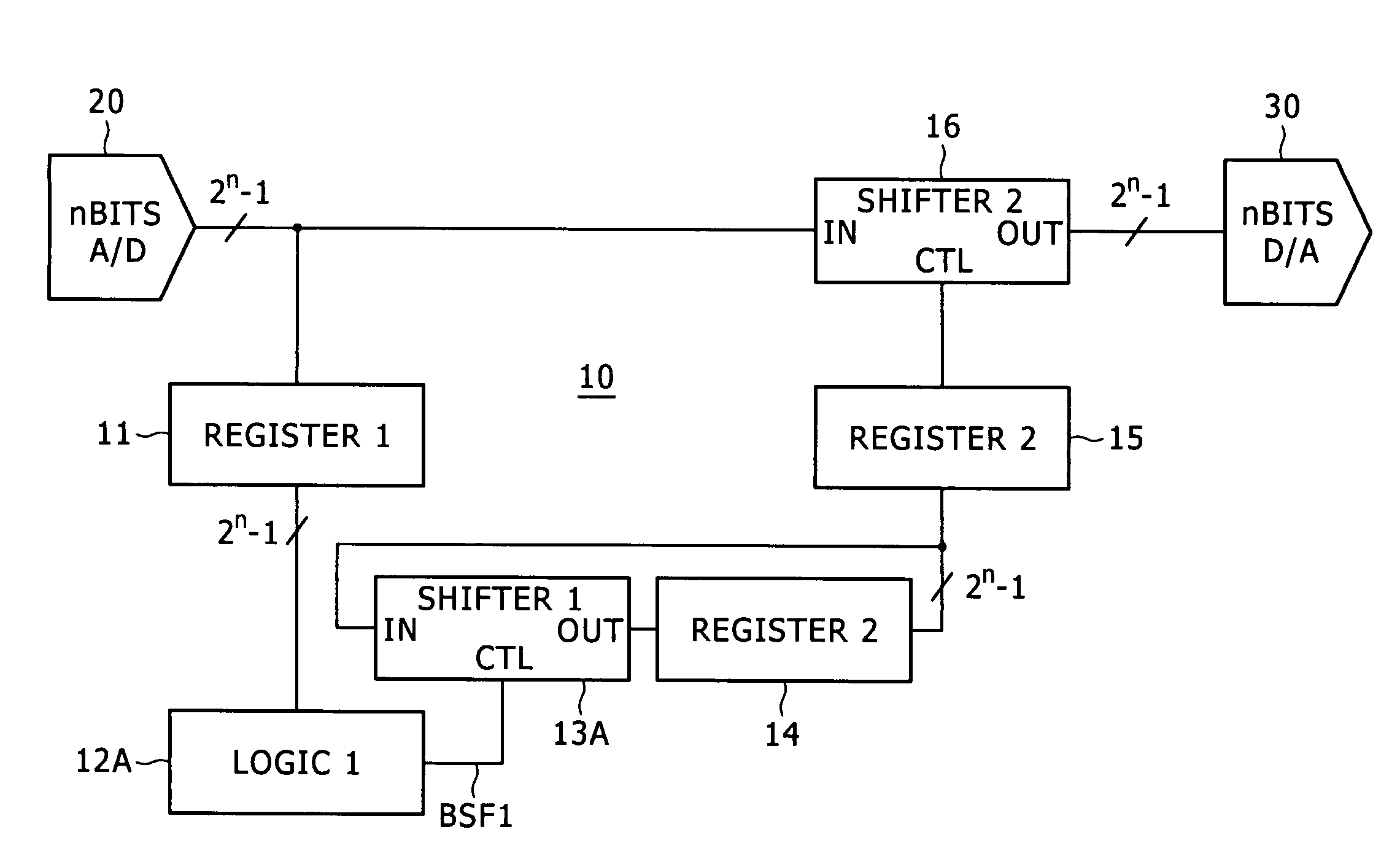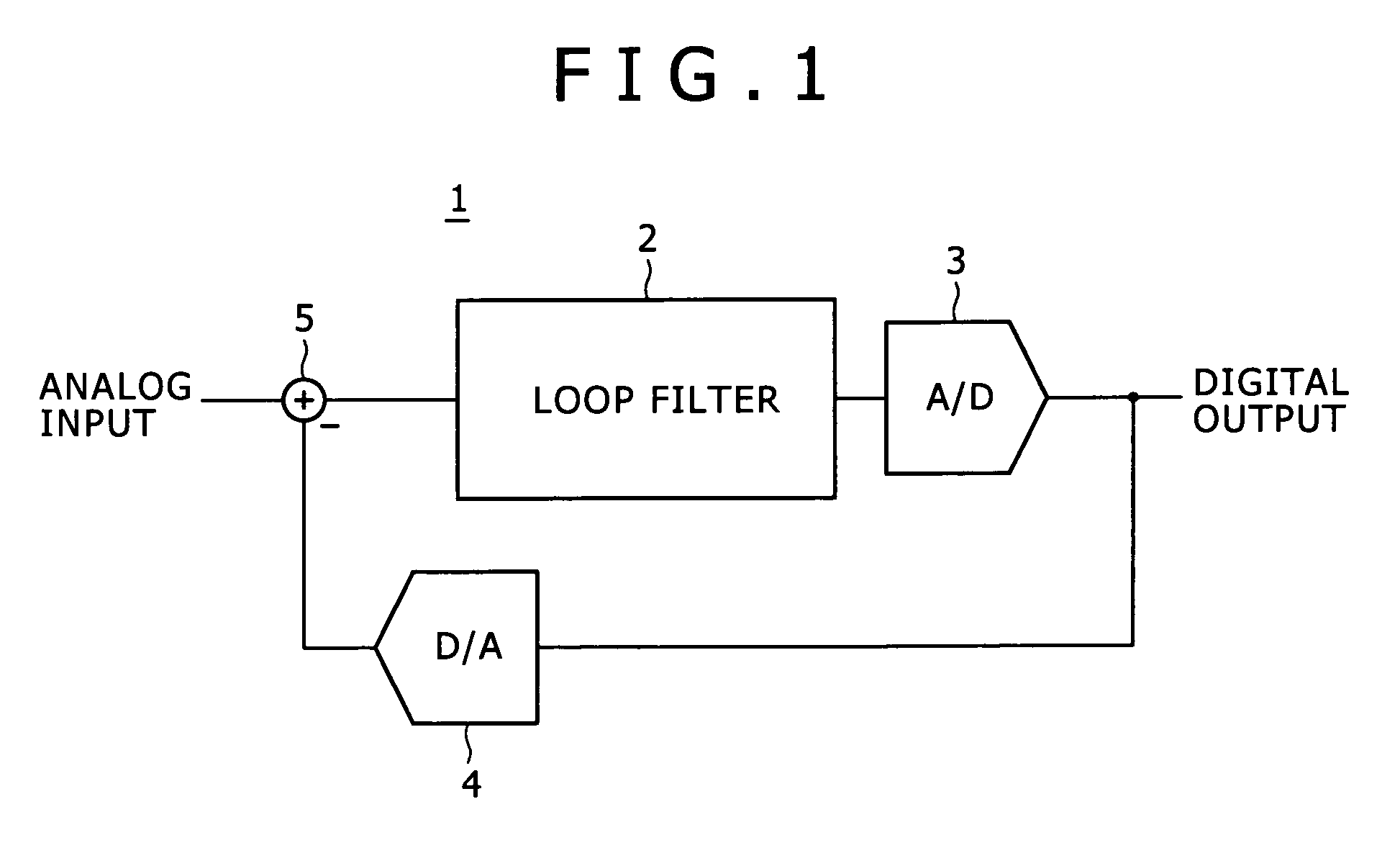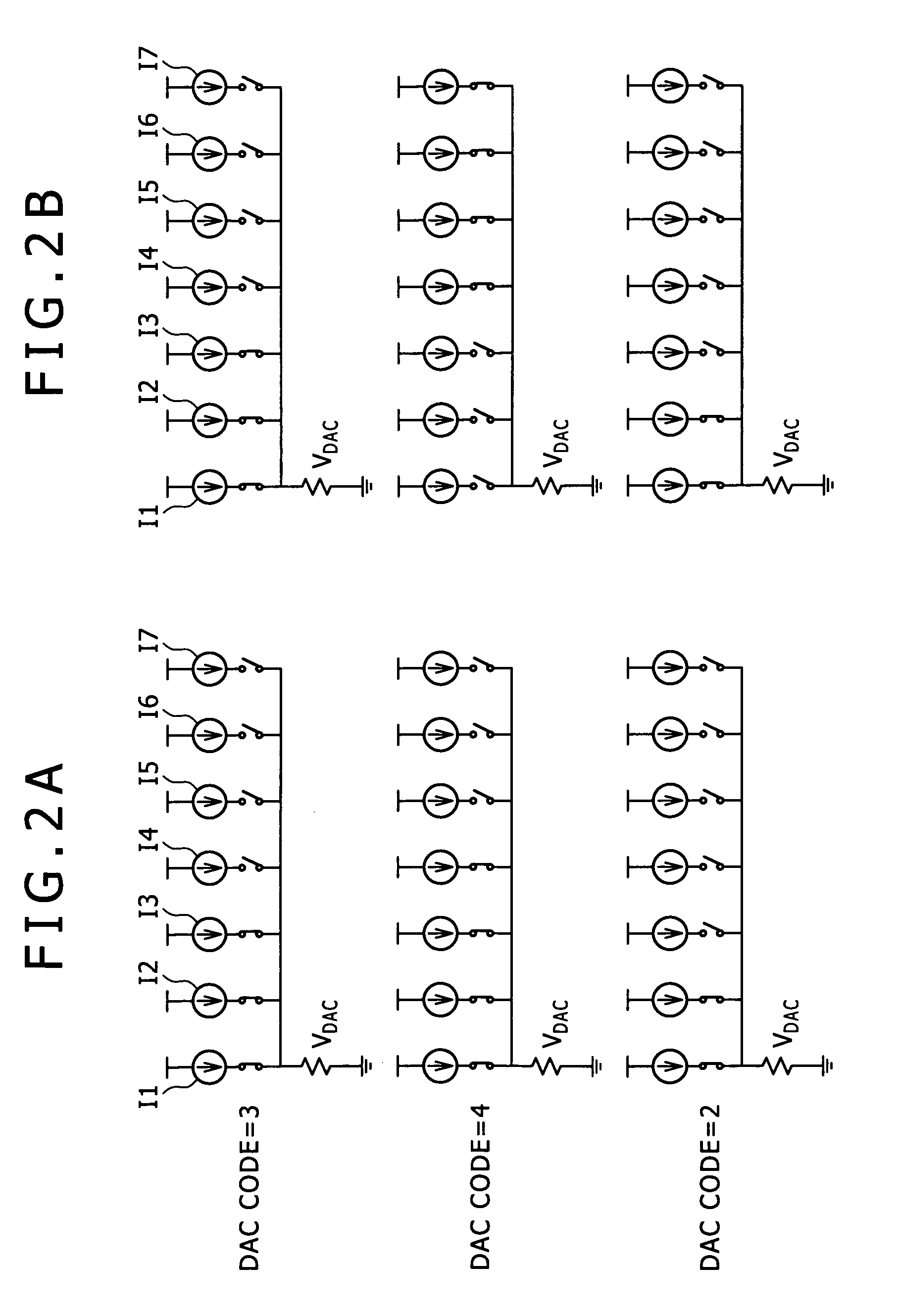Linearity enhancement circuit, ΣΔ A/D converter, and reception apparatus
a linearity enhancement and converter technology, applied in the direction of digital-analog converters, analogue/digital conversion, instruments, etc., can solve the problems of affecting the efficiency affecting the conversion speed of the conversion process, so as to achieve high-speed conversion performance and low power consumption
- Summary
- Abstract
- Description
- Claims
- Application Information
AI Technical Summary
Benefits of technology
Problems solved by technology
Method used
Image
Examples
first embodiment
1. First Embodiment
[0042]FIG. 5 shows a typical structure of a linearity enhancement circuit 10 of a D / A converter implemented as the first embodiment of the present invention adopting the DWA scheme. The linearity enhancement circuit 10 as the first embodiment has an n-bit A / D converter 20 disposed on the input side and an n-bit D / A converter 30 on the output side.
[0043]FIG. 5 shows a case in which the n-bit A / D converter 20 is used. The output of the n-bit A / D converter 20 is illustratively the thermometer code of (2n−1) bits. For example, the output of a three-bit A / D converter is seven bits. The thermometer code is a code representing values by the number of “1” bits.
[0044]The linearity enhancement circuit 10 is structured to include a first register 11, a first logic block 12 acting as a first shift amount creation block, a first shifter circuit 13, a second register 14, a second logic block 5 acting as a second shift amount creation block, and a second shifter circuit 16. The ...
second embodiment
2. Second Embodiment
[0073]FIG. 12 is a block diagram showing a typical structure of a linearity enhancement circuit 10A of a D / A converter implemented as the second embodiment of the present invention adopting the DWA scheme. FIG. 12 shows an example in which a three-bit A / D converter and a three-bit D / A converter are used. The linearity enhancement circuit 10A of the second embodiment is different from the linearity enhancement circuit 10 of the first embodiment in the following points.
[0074]The linearity enhancement circuit 10A of the second embodiment does not have a second logic block. The first logic block of the second embodiment does not convert the thermometer code of (2n−1) bits (i.e., 7 bits in this example) to decimal numbers. Instead, the first logic block feeds the seven-bit code to the first shifter circuit 13A. In addition to the first register 11A and second register 14A, a third register 17 is disposed in the output stage of the second shifter circuit 16A. The first...
third embodiment
3. Third Embodiment
[0129]FIG. 17 is a block diagram showing a typical structure of a ΣΔ A / D converter 100 implemented as the third embodiment of the present invention. The ΣΔ A / D converter 100 is made up of a filter block 110, an n-bit A / D converter 120 of low resolution (e.g., 1 to 5 bits), a D / A converter 130 having the same number of bits as the A / D converter, a linearity enhancement circuit 140, and a subtractor 150 in the input stage. Being a feedback-based system, the ΣΔ A / D converter 100 reduces the nonlinearity and noise of the circuit and thereby provides high resolution.
[0130]The A / D converter 120 corresponds to the A / D converter 20 in FIGS. 5 and 12, and the D / A converter 130 corresponds to the D / A converter 30 also in FIGS. 5 and 12. In a feedback loop FDB, the linearity enhancement circuit 10 or 10A in FIG. 5 or 12 is adopted as the linearity enhancement circuit 140 connected interposingly between the output of the A / D converter 120 and the input of the D / A converter 13...
PUM
 Login to View More
Login to View More Abstract
Description
Claims
Application Information
 Login to View More
Login to View More - R&D
- Intellectual Property
- Life Sciences
- Materials
- Tech Scout
- Unparalleled Data Quality
- Higher Quality Content
- 60% Fewer Hallucinations
Browse by: Latest US Patents, China's latest patents, Technical Efficacy Thesaurus, Application Domain, Technology Topic, Popular Technical Reports.
© 2025 PatSnap. All rights reserved.Legal|Privacy policy|Modern Slavery Act Transparency Statement|Sitemap|About US| Contact US: help@patsnap.com



